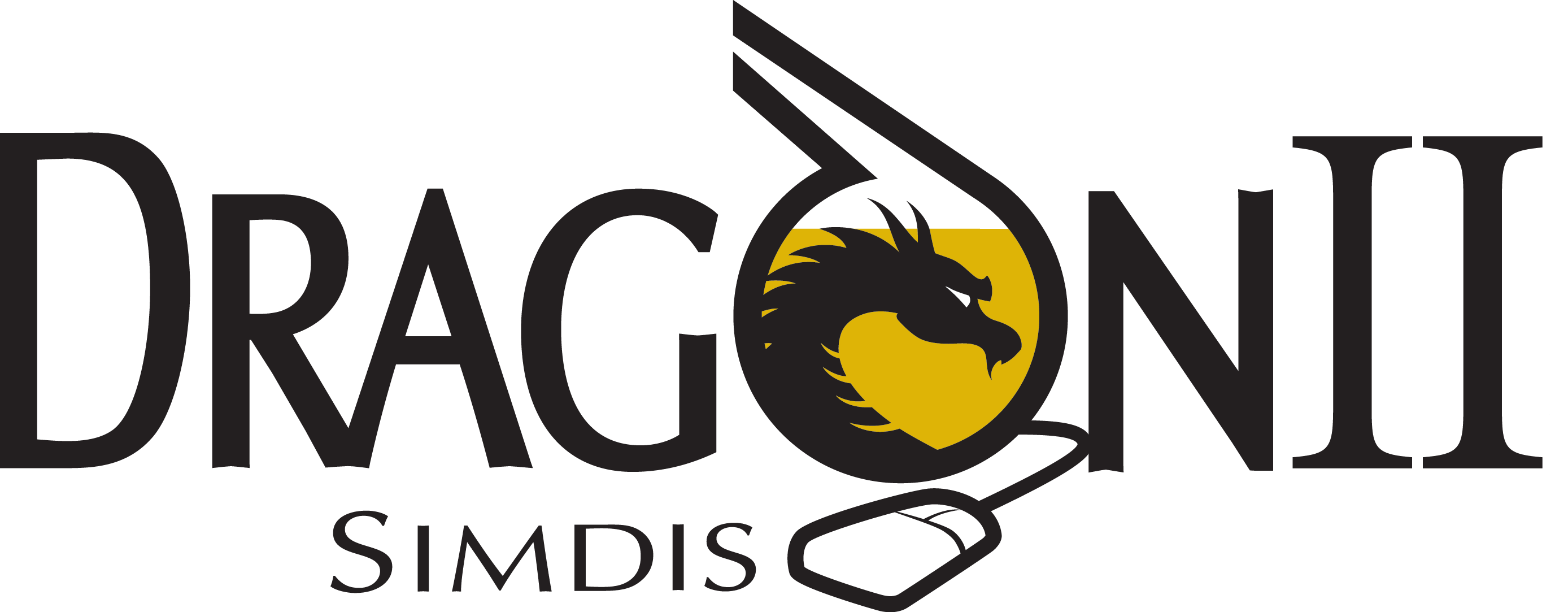
This update of Dragon II Simdis comes with several new options that provide convenience, clarity, and ease as you work. It also has some brand-new features that have not been available before in Envantage Simdis software. Have a look at the new features in this blog posting and if you would like to try out some of them you can do so by downloading a 30-day free trial. Click the button on the right to download the software and give it a spin. Click here for more information about Dragon II Simdis
New Weight % column in Calibration Table
The calibration table has always had Volume %, RF, and RMR columns but they were only used for D7096. For all other methods the columns were there but all values were “0”. Now ONLY D7096 will have Volume %, RF, and RMR columns. All other methods will have a Weight % column. Most of the methods will still not use these columns. D2887 has a requirement to validate the Relative Response Factors when the method is first installed, or when a major modification to the system occurs (like installing a new column or new injector). For this evaluation the Weight % values of the D2887 RT Mix will be entered into the Weight % column. These can be found on the certificate that came with the standard. At that point the RRF evaluation can be reviewed in a new Calibration QC tab that has been added to the D2887 QC report.
D7096 Calibration Table
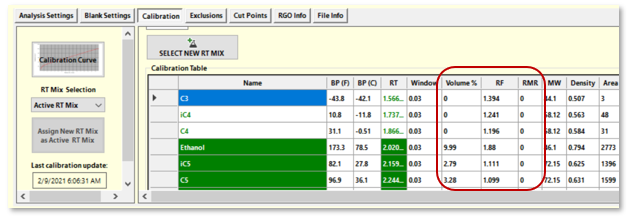
New Calibration Table for D2887 et al.

New D2887 QC tab
Along with the addition of the new Weight % column to the Calibration Table, a new tab was added to the D2887 QC report. The new tab contains the Relative Response Factor data and is labeled “Additional Criteria”. This additional criteria only needs to be validated at D2887 installation or when the system has undergone a major modification. Most of the time, while running D2887, only Resolution and Skew should be monitored in the normal way to ensure system suitability.
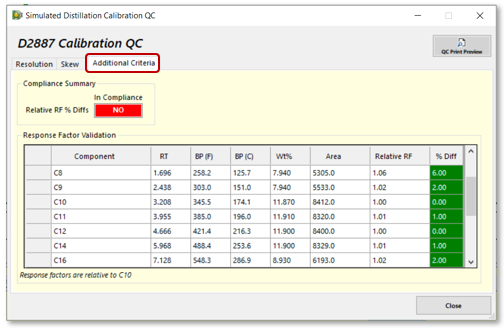
Calibration Curve now included in Calibration Report
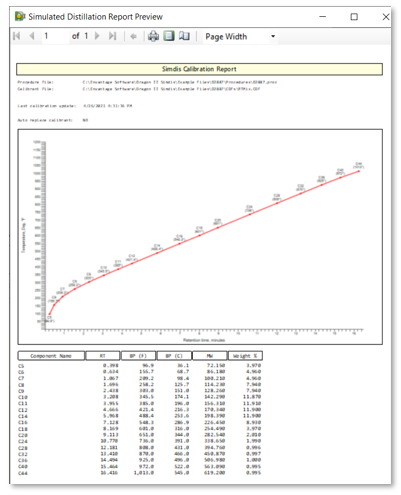
While on the Calibration tab click “Print Preview” to see the new Calibration Report. It now includes the Calibration Curve.
Display Component Temperatures on the Calibration Curve

While on the Calibration tab click “Calibration Curve” in the left panel. There is now an option to “Show Component Temperatures” in addition to or instead of “Show Component Names”
New Calibration Curve Option on the SimDis Report
On the Options>Reporting tab, in the block “Information to Include on the Report”, there is a new option “Calibration Curve”. When this box is checked the calibration curve is overlaid on top of the sample chromatogram.
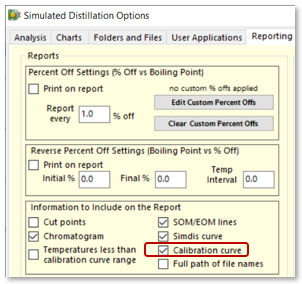
In the following example the chromatogram is overlaid with the SOM/EOM lines, the Simdis curve, and the Calibration curve:
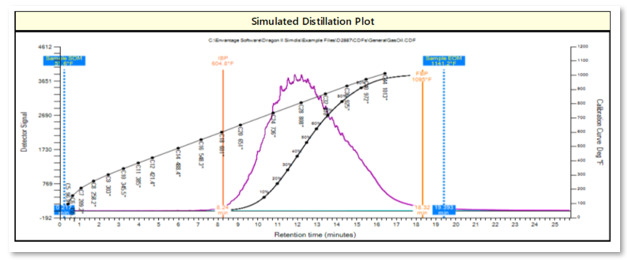
Distillation Report
On the Options>Reporting tab there is a new section “Additional Reports”. Within this section is a new option: “Distillation Curves and results”. Check the box and select a correlation model from the Reports section. The Distillation Report will print the curve, the boiling point distribution, and the selected correlation model.

Boiling Point Curve Increments can be Edited
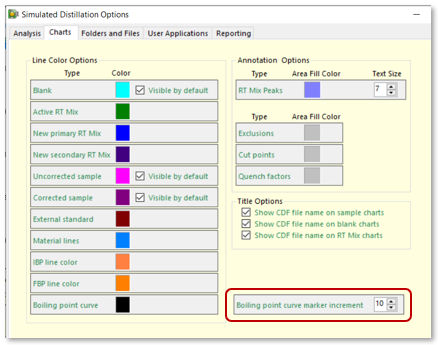
Change them on the Options>Charts tab
Set to “0” if no increments are desired
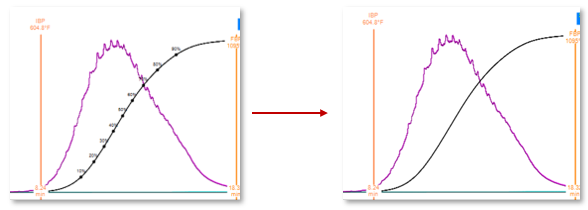
Temperature Units on Reference Gas Oil Editor can now be Edited
The RGO temperature unit should match the boiling point results temperature unit. Changing the temperature units of the RGO with this tool is preferable to allowing Dragon II Simdis to make a conversion “on the fly”. There is another change to this tool; after selecting a RGO, it now opens in read-only mode. This allows review of the RGO data without accidently editing anything. To get into edit mode click “Edit RGO”.

At that point the temperature units can be changed or any other edit can be made.
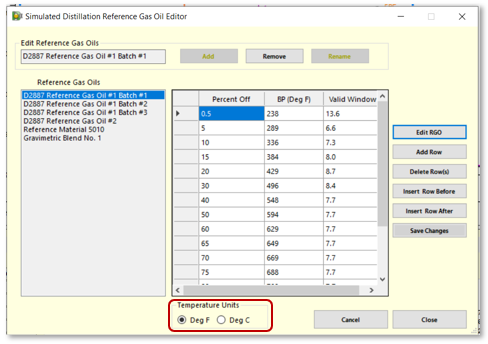
Correlation Editor
Like the Reference Gas Oil Editor, a custom correlation will open in read-only mode. Click “Edit Model” to make edits to an existing model.

